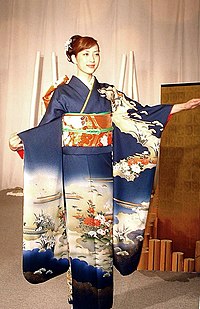| Small private rooms divided |
The meaning of Karaoke in Japanese : kara = empty + oke = orchestra (shorten from orchestra)
There are many Karaoke boxes throughout Japan. In a floor, there are many small private rooms (Karaoke box) with karaoke machine. Normally a group with 2-8 people go into a box. So we don't have to sing in front of strangers.
Karaoke is singing with a pre-existing song, where you replace the original lead singer. Karaoke songs are reproduced to sound like the original song, but without lead vocals. The lyrics of the song are presented to the singer via a video screen, highlighting the words to be sung, so that the singer can follow along without memorizing the song lyrics.
| Inside of Karaoke box |
In a Karaoke box, an hourly room charge is imposed.(average; one person/hr is about 1,000-2,000 yen, drink/food is option) Average hours to spend in a Karaoke box is about 2 or 3 hours.
* Rules of Karaoke Etiquette you should keep in mind when you're out having fun singing:
Respect the Singer
Applaud Everyone
Respect the rotation
Respect the Equipment and Your Audience
Let's fun with your frineds in a Karaoke box.
PS. Karaoke boom was over in Japan (the highest boom was in 1996)
The number of karaoke box facilities in Japan: 128,400 rooms / 9,126 shops (March, 2010)
PS. Karaoke boom was over in Japan (the highest boom was in 1996)
The number of karaoke box facilities in Japan: 128,400 rooms / 9,126 shops (March, 2010)
Average sales of a room/month: about 250,000 yen.






